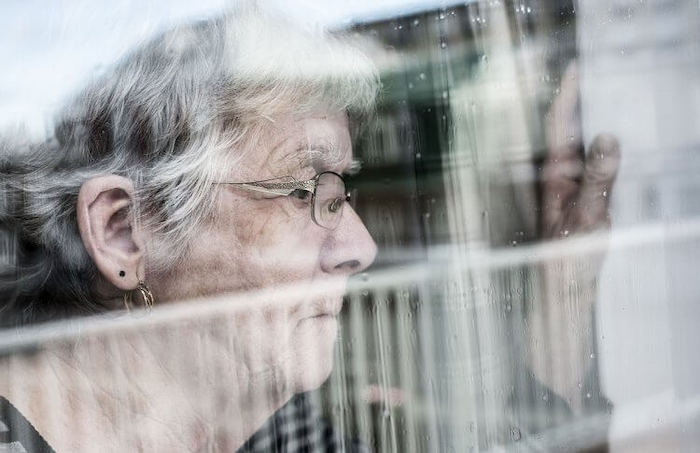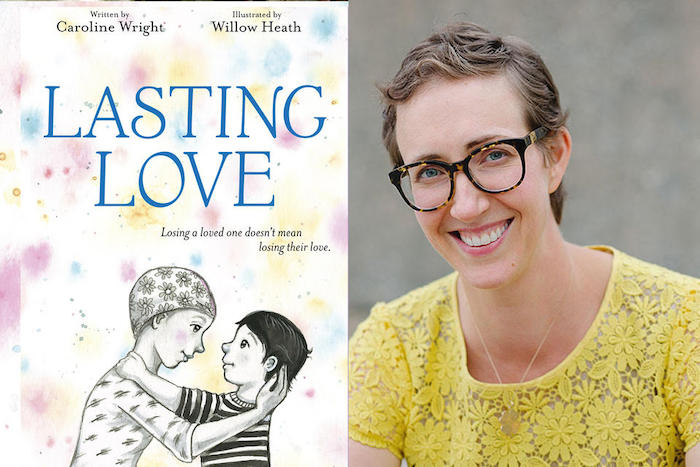By Gabrielle Elise Jimenez
For the past few months, when appropriate, I have asked some of my patients what it feels like to die. My reason for this is because I want to provide better care; I want to truly tap into all the ways that we can relieve someone of the struggles they experience when they are dying. I found it interesting that most people said that usually, no one asks that particular question. I explained my reason for wanting to know, and almost everyone had something to say.
I think we always assume pain is in the forefront, and that has proven to be true but it goes deeper than that. With the pain, comes the fear of never being free of the pain. The emotional exhaustion from having to constantly try something new, or increasing something that doesn’t work, or worse, not having it even touch the pain at all, is a heavy weight to bear. There is a very common thread amongst people who are experiencing pain; no one wants to die feeling that way, or worse, living that way until they die. While medications are effective most of the time, usually they just knock the patient out for an hour or two, and then are woken up by their pain once the medication wears off. Each person told me they do not want to die that way. One person said to me, “every day I lay here in this bed and I don’t move; not because I am paralyzed physically, but because I am paralyzed by the fear of making my pain worse if I move. Every time someone comes in here to reposition me, or check on me, I prepare myself for pain”. This resonated huge for me.
Death is hard enough, but death with pain is a constant debilitating struggle. I certainly can’t speak for anyone else, and I am in no position to tell you what to do, but after hearing this over and over again, and as a patient advocate, I can assure you anyone nearing the end of life, struggling with severe pain does not want to hold on and wait it out. They certainly do not want to feel this way until they take their last breath. My advice is if given the opportunity to ask them what they want or need, and they have a voice, listen to them and respect their wishes. It may not be something you approve of or agree with, but this isn’t about you. Imagine if you were able to be the difference between a painful or a peaceful death.
Emotional pain is a runner up to physical pain for those at the end of life. You would be surprised at how many people are actually not afraid to die. They are not as focused on the death itself, but more often, the amount of time it takes to get there. One person said to me, “every morning I wake up, I want to cry because I am still here”. Lying in a bed, day after day, knowing the inevitable is around the corner can be agonizing. I broke down and cried when a patient said to me, “I just want to die and I can’t. I am given a death sentence, of which I can no longer fight, but I am forced to just sit here and wait. There is no dignity in death. I have to die on someone else’s terms”. How do you respond to that?
They struggle with losing their independence, and having someone else clean and change them. This was repeated often. Having someone else move you from side to side, rolling you over as your head is pressing into the side rail, not even realizing that your shoulder is crunched down under you so hard you ache for hours after. And then, once you are cleaned up, re-positioned how someone else thinks you should be, you just lie there and cry inside. As death nears, they can’t help but think about their death; what it will be like, when it will happen and why the hell it isn’t happening sooner.
Meanwhile on the other side of this, is the family and loved ones crying at your bedside begging you not to leave them. So with everything else you are experiencing, guilt comes along and rears its ugly head. One person said to me, “I feel like I have let them down”. That is a heavy responsibility to carry. It is easy for us to think about how their death will effect us; but what most of us don’t think about, is how our feelings of their impending death effects them. So many have said to me how badly they wish they could tell their loved ones this isn’t their first choice, they didn’t want to get sick, they don’t want to die. They want to say they are sorry; sorry for getting sick, sorry for this long drawn out process, and most of all, sorry for the pain it causes everyone around them. Here they are dying and they want to apologize.
While I heard about the physical and emotional pain, I also heard the lovely things as well. Even people who were usually private and quiet and preferred to be left alone, welcomed the bedside visitors, the memories shared, the music played and the heartfelt goodbyes. They want to know how much they are loved, they want to know they made a contribution, and even though it is a hard pill to swallow, they want to know they will be missed. We think a lot about our own grief, and what saying goodbye to someone will feel like, but they have that too, in a very big way.
Some of the most beautiful conversations I have had are about the visions people see, the people standing next to the bed, or walking by a door or window… the ones that we can’t see. People tend to think they are delirious and afraid, but that is not what they have shared with me. In fact most feel safe and protected knowing there is someone watching over them, and perhaps waiting to guide them safely to wherever it is they will be going. I can’t help but wonder if it is our own fear that we are projecting onto them. What if instead, we asked about who or what they saw, encouraging them to trust us with their visions.
I cringe every time I see someone moving a patient without telling them first; repositioning them every two hours because that is what they were taught, not once thinking if this is truly in their best interest and certainly not thinking of the pain or discomfort this might cause. Whether or not they can verbalize, they should always be treated with kindness and respect. They should be offered a gentle warning before being touched, moved, or given medication. Lights should not be suddenly tuned on above their heads, after lying in a darkened room, covers should not be piled on heavily or quickly removed, and they definitely should NOT be lying naked for all to see when being changed. And please, if someone is actively dying, put the blood pressure cuff down, why are you taking their blood pressure? This irritates me like you can’t believe. Most vital signs can be assessed visually or by touch; at the end of life, please don’t put them through those tests. So many things we could do differently if we took the time to ask them what they need, or if we simply thought about their needs.
I remember awhile back, I walked in to visit a patient and said, “how are you doing today?” which seemed like a valid question. I had no idea the effect that question would have on someone until I received his response. “How do you think I feel, I am dying”. I never asked that question again. I start each visit now with, “it is really nice to see you”.
As I have said in many of my previous blogs, this is their experience not ours. The fact that we assume what they need, without asking, even when they have a voice, is selfish. As a society we have grown disrespectful on many levels and I am reminded of this most of all when talking to people who are at the end of their life. These are human beings who still have a voice and I think it is our responsibility to hear them. If we listen, if we truly take the time to ask them what they need, imagine the care we can provide not only to them, but also to those who do not have a voice, who can’t verbalize their needs. I only spoke to a handful of patients, so my findings do not speak on a global level, but I do think it is a good start to providing better care.
What does it feel like to die? It is emotional, it can be painful, it is usually sad, and it can sometimes be incredibly lonely. People do not die the same way and while there are similarities and common symptoms, each is still very unique. Therefore we need to take the time to listen, to observe, and assess what each person is experiencing, and what they might need when they are going through the dying process. We cannot treat everyone the same way. The only consistencies we should have when caring for someone at the end of their life, is that it is always done with kindness, compassion, respect, and honesty.
Complete Article ↪HERE↩!







